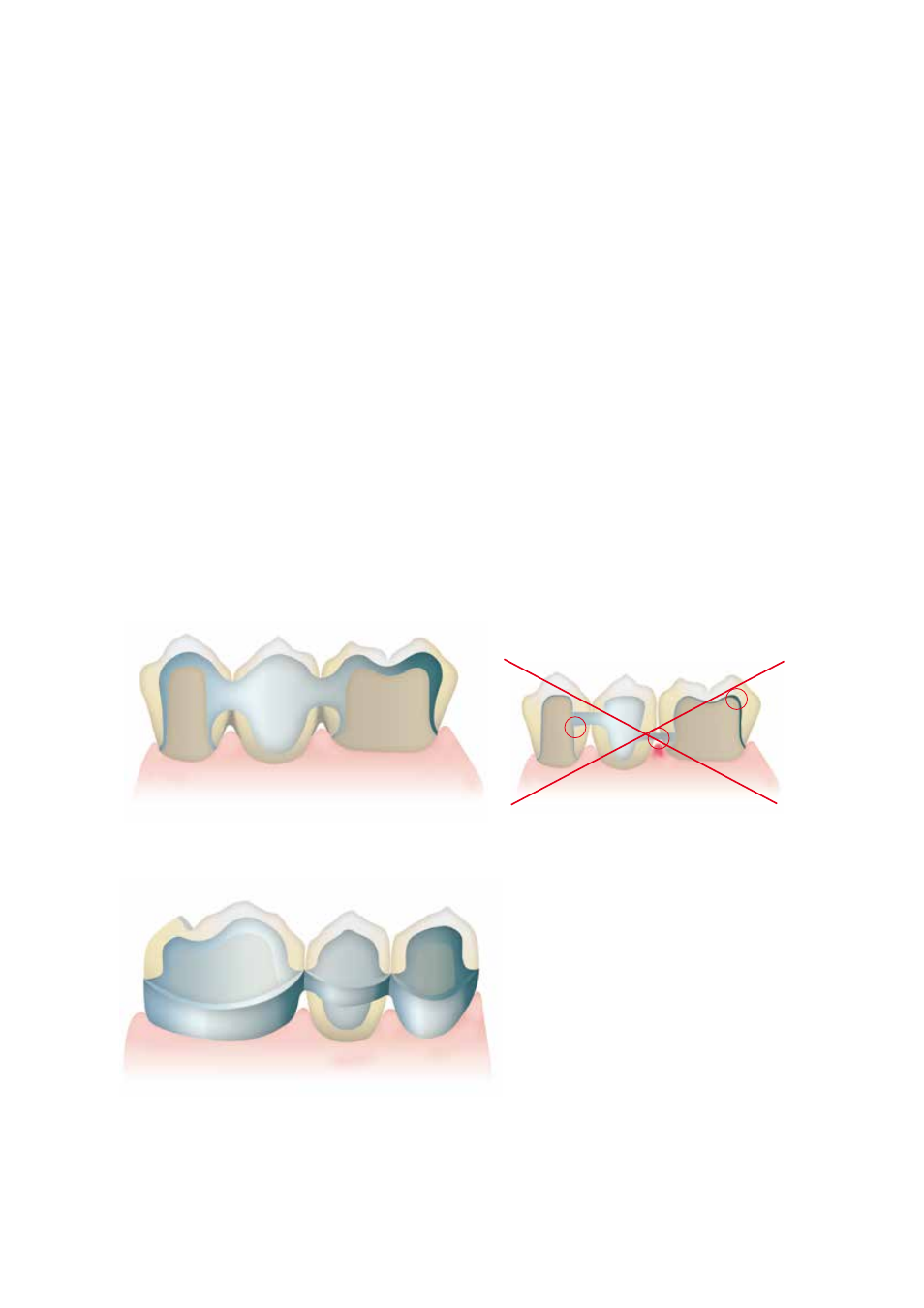Ivoclar Vivadent IPS InLine System User Manual
Page 48

48
4. framework design for bridges
Thermal stress during firing and masticatory forces after cementation affect metal frameworks. These forces must be
transferred the framework rather than the veneer. Particularly in the connector areas between bridge abutments and
bridge pontics in bridge reconstructions, the stability must be ensured with the help of the framework design and
adequate framework material thickness. The framework design and framework thickness must therefore meet all the
optical and functional requirements as well as the aspects of periodontal hygiene. A full wax-up with the corresponding
reduction of the ceramic provides the most predictable results.
During veneering with ceramic materials, the bridge framework is exposed to high temperatures several times. With an
inappropriate framework design or insufficient framework thickness, the high temperatures during firing may result in
distortion or inaccuracy of fit of the framework. A scallop-type design with e.g. interproximal reinforcements counteracts
this development. Additionally, this framework design (e.g. with cooling struts) ensures more even cooling of the restora-
tion during the cooling phase. This is particularly important if high gold alloys are used.
In order to enable optimum oral hygiene with bridge restorations, the design of the interdental spaces should be given
special attention. Adequate opening of the interdental area without creating black triangles should be given special
attention when designing the framework in order to ensure proper periodontal hygiene with interdental brushes and
dental floss.
correct
correct
wrong
